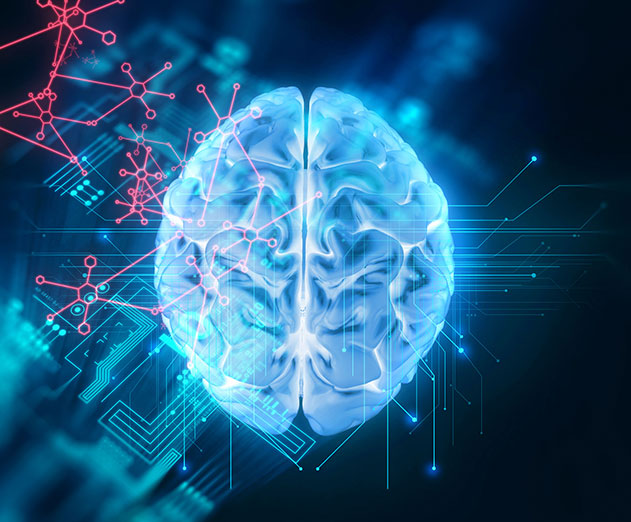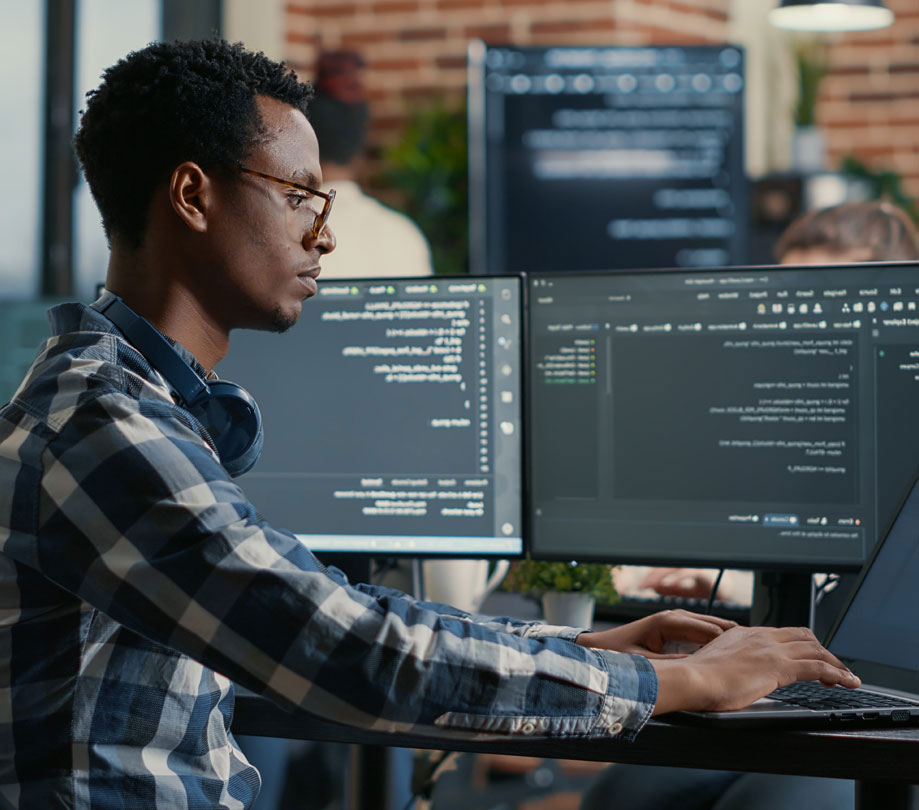How human assisted AI may be the future
Tuesday, December 26, 2017

|
Richard Harris |
How human-assisted AI can give the benefits of AI without the drawbacks of possible inaccuracies.
Self-driving (autonomous) cars, robotic hotel concierges, and Amazon’s intelligent delivery drones - it’s hard to minimize the potential impact that artificial intelligence (AI) and machine learning (ML) promise. Business leaders are all aflutter about AI’s potential for providing game-changing impact to their industries. AI is also gaining attention for the perceived threat that they will replace people.
As exciting as it may be, AI is only as good as the data and training methods you’re using to fine tune it.
Pedram Abrari, an AI expert and CTO of Pramata says, “All AI - at least at the present needs some element of human input to function successfully. An example is how auto-suggest on Google queries improves with your input. Users supply data through responses or non-responses, and those responses train the Google algorithms.
For a look at how human assisted AI can unlock data to drive new revenue growth and business performance at organizations, Pedram weighs in with his thoughts, and also to debunk some common AI + Big Data myths, the consequences of applying AI without accurate data, and/or how human-assisted AI is helping companies such as CenturyLink, Comcast Business, HPE, NCR, and Novelis achieve amazing ROI.
ADM: What is human-assisted AI?
Abrari: In general, Human-assisted AI is when human experts help AI become more accurate over time. In turn, it helps human experts be more productive. AI gets “smarter” over time by using human experts’ feedback to increasingly improve its accuracy. For example, each time we do a Google search, by selecting what we believe is the right answer to our query, we’re helping Google AI get smarter.
ADM: How does human-assisted AI work?
Abrari: Many AI models need to be trained by providing input data with corresponding correct outputs. This is called the training set. Obtaining a training set that’s accurate and representative of the whole population is a challenge. Human-assisted AI is where people help AI models become more accurate by simply interacting with an AI-driven service. Their human behavior is tracked and used as training data to create more accurate AI models.
ADM: What is one of the biggest misconceptions about AI today?
Abrari: The biggest misconception is that AI is intelligent on its own! AI isn't actually intelligent, though it simulates intelligence. However, the “garbage in, garbage out” problem that plagues computing also applies to AI.
ADM: Can you provide some examples of human-assisted AI in the consumer space?
Abrari: Google search engine, Facebook picture selection and Amazon suggested purchases.
ADM: How can enterprise customers benefit from human-assisted AI-infused solutions?
Abrari: Firstly, human-assisted AI can be used to capture enterprise’s best practices and decision support and eventually, with time, decision automation. This helps decision makers make better, faster decisions that align with best practices. Eventually, when AI accuracy becomes advanced enough, it will automate a lot of standard business decisions thus allowing business experts to focus on exceptions. For instance, with high volume, transactional customer relationships you can use automated AI solutions to solve many problems such as closed loop quote-to-cash processes. But, for complex bespoke relationships, AI solutions need to leverage humans to point the AI in the right direction for more complex (non-transactional) solutions and processes.
ADM: What factors make human-assisted AI a success for an organization?
Abrari: Knowing how to leverage AI is as critical, if not more so, than the AI technology itself. Knowing what you’re trying to do with a technology is more important than the specifics. Hiring a team of data scientists won’t make magic happen, management needs to understand the benefits of AI and figure out what business problems they’d like their data science team to help solve for them.
I always recommend starting with the end objective in mind, and then evaluating the approaches to get there. Too many people find a hammer and then start looking for a nail. There are so many AI tools available, so you really need to focus on your business objectives and the core data available to support them before you start evaluating different AI approaches. Don’t focus on fancy machine learning platforms to comb through your data. Figure out how you’re doing first, then get the data to support that goal. In other words, success requires very targeted applications of VERY specific AI technologies.
ADM: What was the genesis of Pramata’s inclusion of human-assisted AI into your product development?
Abrari: One of our core offerings is a commercial relationship system of record that helps companies find the data needed to stem revenue leakage that comes from lack of vision into a company’s products, pricing, operational obligations, legal obligations, and regulatory risks.
We don’t just provide tools to navigate a company’s commercial relationship data, we actually curate the data to more than 99% accuracy. As part of this curation process, among other managed services, we utilize human-assisted AI to extract and analyze every single piece of pertinent information a company has on a commercial relationship.
For example, we’ll use AI to scan a document using OCR, classify it as a master, amendment, or another type of document, and identify which dates (or implied dates) in the document that are likely to be related to a renewal.
We choose which AI strategy is best for each type of data we are digitizing. In some cases, AI will “auto extract” the information, because of high recall and accuracy. In other cases, we use human-assisted AI to help create a recommendation.
At Pramata, we understand that our customers want accurate and actionable information on their commercial relationships. It’s not important to them whether AI curated 9% or 99% of the information.

Pedram Abrari, CTO, Pramata
ADM: Where do you see human-assisted AI in the future?
Abrari: Everyone is enamored with predictive technology, and rightly so because of its potential. However, you need to be able to do basic reporting (i.e. Excel spreadsheets) and analytics (i.e. data visualization) properly before using predictive analytics.
I believe people will play around with AI as a forecasting tool and then realize they have a problem with how it does or doesn’t help produce accurate usable data. They will then look for ways to ensure their systems have accurate and actionable content. If the base data is inaccurate, AI’s output will also be inaccurate.
I predict that AI will be more useful for organizing content before it becomes useful for prediction. This has happened in the business-to-consumer (B2C) world, but in the business-to-business (B2B) world many people seem to want to put the cart before the horse.
ADM: Does Pramata use human-assisted AI differently than other organizations?
Abrari: Yes, because after years of working with large enterprises and their large quantities of data, we know the quality of the training data is the biggest indicator of the accuracy of the AI output in terms of both precision and recall. Years of experience with human-assisted AI with literally tens of thousands of documents, Pramata has a significant advantage because we understand the limitations of AI. In fact, we have a team of lawyers who quality-check the output of our AI models. Effectively, every single output is reviewed by a human expert. As a result, our training set is our entire data set - that’s unique. This provides us a lot of flexibility in putting together a highly effective training set, which in turn results in more accurate AI models.
About Pedram Abrari, CTO of Pramata
Pedram Abrari, CTO at Pramata, is a technology services veteran, having spent decades in software development, from hands-on technical work to engineering team building and leadership. Most recently, he led the research and development and cloud operations teams at Tidemark as VP of Engineering. Previously, Abrari led similar efforts for Neil Young's company PonoMusic and Progress Software. Abrari also founded his own company, Corticon Technologies, Inc., which he oversaw for over a decade. He graduated from UCLA with a BS in Computer Engineering, and received a Master's in Computer Science from USC.

Become a subscriber of App Developer Magazine for just $5.99 a month and take advantage of all these perks.
MEMBERS GET ACCESS TO
- - Exclusive content from leaders in the industry
- - Q&A articles from industry leaders
- - Tips and tricks from the most successful developers weekly
- - Monthly issues, including all 90+ back-issues since 2012
- - Event discounts and early-bird signups
- - Gain insight from top achievers in the app store
- - Learn what tools to use, what SDK's to use, and more
Subscribe here











